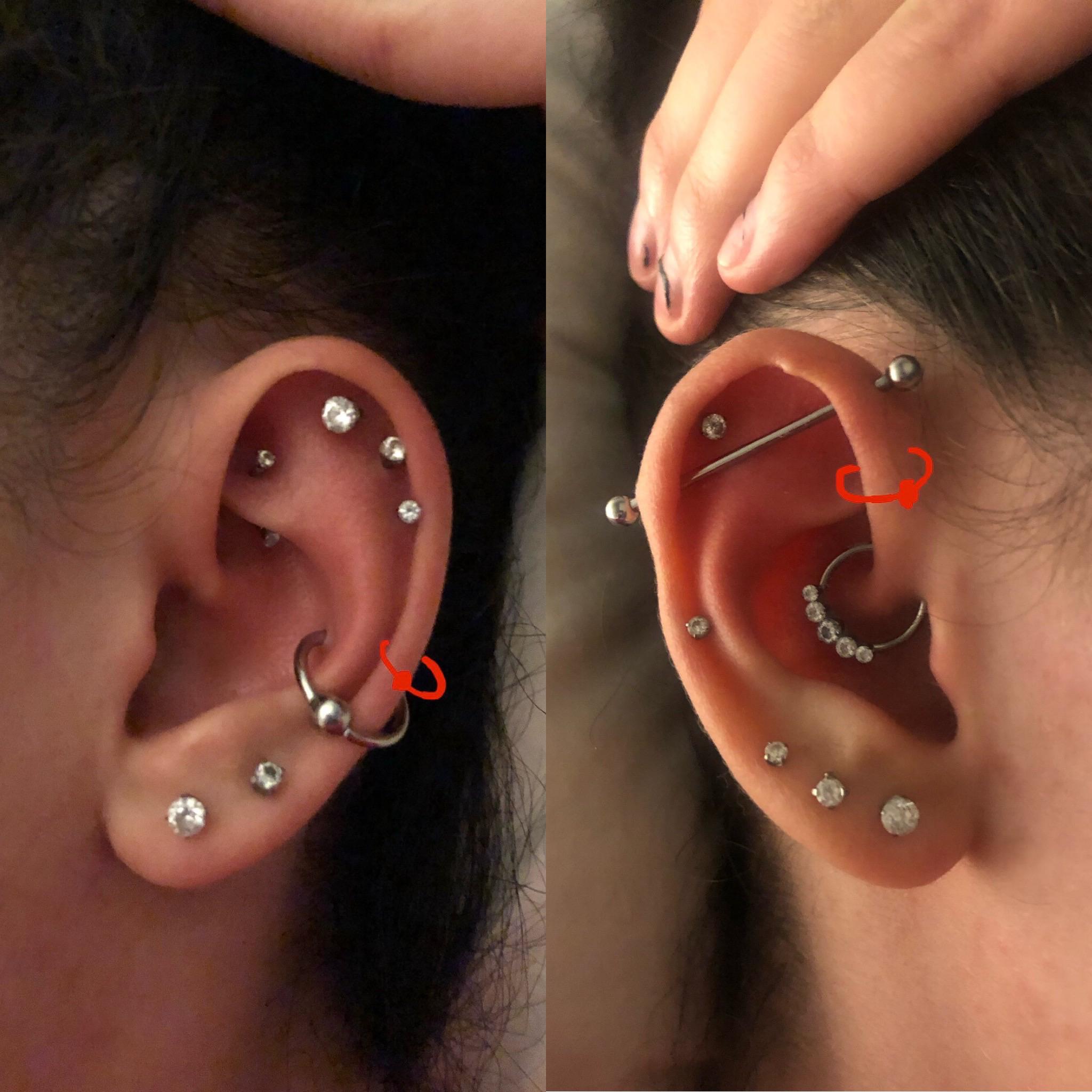Finn Harper is a young writer with a fresh perspective on the piercing scene. He is passionate about debunking myths and misconceptions about body art. Finn's writing is straightforward and engaging.
The healing time for a helix piercing typically ranges from 3 to 6 months, although it can take up to a year for some individuals. This can vary depending on factors such as your body's healing speed, the quality of aftercare, and whether there have been any complications.
Several factors can affect the healing time of a helix piercing. Your personal health plays a role, as well as your aftercare routine, the quality of jewelry used, and the piercing technique. Taking good care of your piercing is crucial for a speedy recovery.
To accelerate the healing process, there are a few tips you can follow. Maintain proper hygiene by cleaning the piercing with a saline solution. Avoid sleeping on the pierced side and refrain from frequently touching or twisting the piercing. These practices can help prevent irritation and promote healing.
It's important to be aware of signs of infection or complications that may prolong the healing process. If you experience severe pain, prolonged redness, swelling, or discharge from the piercing, it could indicate a problem. In such cases, it's best to seek professional advice.
Remember, everyone's healing process is unique, so be patient and give your helix piercing the time it needs to fully heal.
What's Influencing Your Helix Piercing Healing Time? 🤔
The healing time for a helix piercing can vary from person to person, but on average, it typically takes around 3 to 6 months. However, for some individuals, it may take up to a year for the piercing to fully heal. Several factors can influence the healing time of a helix piercing.
Your personal health plays a significant role in how quickly your piercing heals. If you have a strong immune system and take good care of yourself, your body will be better equipped to heal the piercing efficiently.
Another crucial factor is your aftercare routine. Proper cleaning and care of the piercing can significantly impact the healing process. Using saline solution and avoiding touching or twisting the piercing will help prevent complications and promote faster healing. Learn more about the care for a fresh helix piercing.
The quality of the jewelry used for your helix piercing is also essential. High-quality jewelry made from materials like titanium or surgical steel is less likely to cause irritation or infection, allowing for a smoother healing process.
Lastly, the technique used during the piercing procedure itself can affect healing time. A skilled and experienced piercer will use proper techniques that minimize trauma to the area, leading to faster healing.
Remember, everyone's healing process is unique, so it's essential to be patient and attentive to your body's signals. If you experience severe pain, prolonged redness, swelling, or discharge from the piercing, it may indicate an infection or complication. In such cases, it's best to seek professional advice to ensure proper healing.

Speed Up Your Helix Piercing Healing Time with These Tips! 💡
Top Tips to Speed Up Your Helix Piercing Healing Process
- Maintain Proper Hygiene: Keep the piercing clean and free from bacteria. This includes washing your hands thoroughly before touching your piercing and cleaning the area with a saline solution twice a day.
- Don't Sleep on the Pierced Side: To avoid unnecessary pressure and irritation, try not to sleep on the side of your new piercing. Consider using a travel pillow to keep your ear elevated and comfortable.
- Use a Saline Solution for Cleaning: Saline solution is a piercing's best friend! It's gentle, effective, and helps to speed up the healing process. Soak a cotton ball in saline solution and gently dab it on your piercing.
- Avoid Frequent Touching or Twisting: Resist the temptation to play with your new piercing! Touching or twisting it can introduce bacteria and delay healing. If you need to adjust your jewelry, make sure your hands are clean first.
- Choose Quality Jewelry: High-quality jewelry made from materials like titanium, surgical steel, or gold can prevent allergic reactions and speed up healing. Avoid jewelry with nickel as it can cause irritation.
- Stay Healthy: Your overall health plays a significant role in the healing process. Eat a balanced diet, stay hydrated, and get plenty of sleep to give your body the best chance at speedy healing.
Uh-Oh! Signs Your Helix Piercing Might Be Having Trouble 😰
Signs of infection or complications can sometimes arise during the healing process of a helix piercing. These signs may prolong the healing time and require additional attention. If you experience severe pain, prolonged redness, swelling, or notice any discharge from the piercing, it could be an indication of an infection or complication.
It's important to address these signs promptly by seeking professional advice from a piercer or healthcare provider. They can provide guidance on the appropriate course of action, such as cleaning the piercing with a saline solution or using prescribed medication if necessary.
Remember, everyone's healing process is unique, and complications can occur. However, with proper care and attention, most helix piercings heal within 3 to 6 months. In some cases, it may take up to a year.
To ensure a smooth healing process, maintain good hygiene, avoid sleeping on the pierced side, and refrain from touching or twisting the piercing frequently. Following these tips can help accelerate the healing and reduce the risk of complications.
If you have any concerns or questions about your helix piercing, don't hesitate to reach out to a professional. They are there to support you on your piercing journey. Happy healing!















